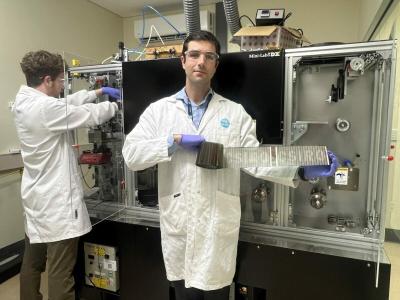Printed flexible solar cells by CSIRO launched on Space Machine Company’s Optimus-1 satellite, as part of Space X’s Transporter-10 mission
Eight mini-modules of the Commonwealth Scientific and Industrial Research Organization's (CSIRO) printed flexible solar cells were attached to the surface of Australia-based space transportation provider Space Machine Company’s Optimus-1 satellite, that was sent into orbit from the United States as part of Elon Musk’s Space X’s Transporter-10 mission.
A statement from the national science agency following the launch from Vandenberg Space Force Base in California explained that it is exploring such solar cells as a reliable energy source for future missions. Eight mini-modules of the printed flexible solar cells were attached to the surface of Optimus-1.






